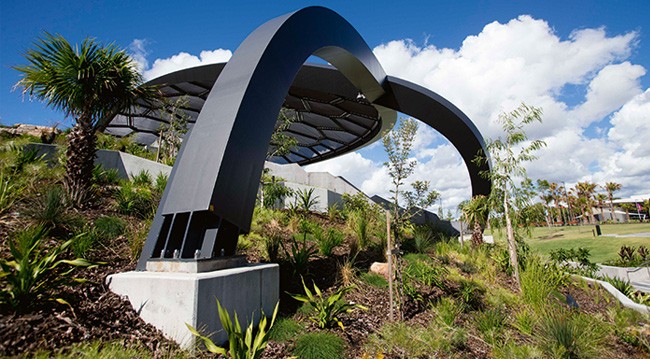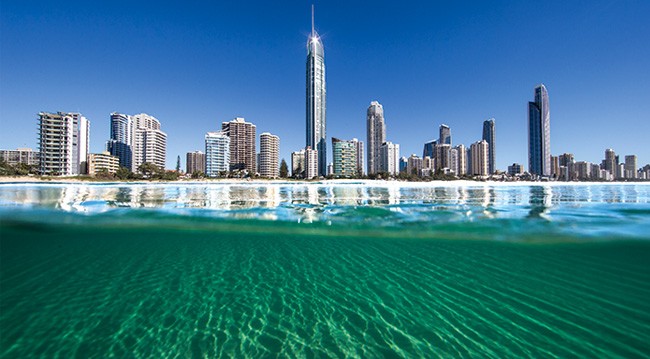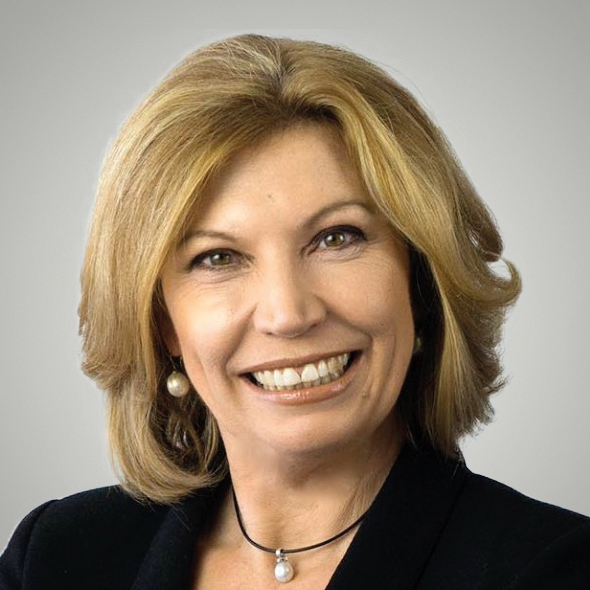With big business plans after the Commonwealth Games, the Sunshine state should be on your organisation's radar.
In April 2018, the Gold Coast hosted the Commonwealth Games, the first time they’d been held in a regional city. More than 6600 athletes from 71 nations attended, more than 100,000 visitors and 15,000 volunteers were involved, and the competition was televised to a global audience of more than 1.5 billion people. Behind the scenes, there was a huge effort to ensure that the 12 days of ceremony and competition were the start of something bigger.
The region is one of the fastest growing cities in Australia, with a population heading rapidly towards the one million mark. With almost $13 billion invested in major infrastructure projects in the Games lead-up, there has been a concerted effort involving state and local government, business and other institutions to ensure Gold Coast 2018 will leave a legacy that goes beyond the world-class sporting infrastructure.
Bronwyn Morris FAICD, AICD’s Queensland Council president, and Gold Coast Airport chief operating officer Marion Charlton GAICD agree that GC2018 was a unifying project for the region.
“We had to deliver something at a time we couldn’t shift. We had to deliver it smoothly, safely and efficiently,” Charlton says.
The Games was also a catalyst to get things done. Morris, chair of RACQ, on the Gold Coast Commonwealth Games Organising Committee and chair of its finance and audit committee, says the Games was a boost in several main ways. It had a positive impact on employees, community and volunteering; it brought forward substantial infrastructure development; and it led to an increased focus on the region as a destination for visitors and investment. It also gave a psychological boost. “It had a substantial destination impact in people realising we are not just a little town anymore,” she says.
New model
The City of Gold Coast has done substantial strategic thinking about its future, working to transform tourist hotspots into more vibrant, sophisticated urban centres that will help reposition the region. Improved transport links, the development of a high-tech knowledge hub, and a focus on education, health, innovation and the city’s cultural and community life is all aimed at diversifying the economic base and improving the region’s appeal for investment and tourism.
Transport and infrastructure
Charlton notes that, “wonderful infrastructure has been a massive legacy.” Gold Coast Airport, initially a low-cost carrier facility working at capacity, completed $80 million in apron expansion before the Games and is now planning a three-level international terminal by 2020, with total investment of around $300m.
Professor Ned Pankhurst, deputy vice-chancellor of Griffith University, a Games sponsor, says coordinated planning has given a boost to infrastructure and the industries of the future. “A fundamental transformative effect on the City of Gold Coast has been the investment in public transport, particularly the light rail project,” he says. The $440m second 7.3km stage of the G-Link was brought forward, connecting Gold Coast University Hospital campus and Helensvale Rail Station. “It has taken a city for whom public transport was a novelty and changed the way a significant number of people think about public transport and how they use it,” Pankhurst says.
In Southport, the emerging Health and Knowledge Precinct is gearing up to become an Asia-Pacific health and innovation hub, home to Griffith University, the $1.76b Gold Coast University Hospital and a new private hospital, encompassing the former athletes’ village. It is estimated that it will lead to the creation of more than 12,500 high-value jobs.
“We want to drive the development of industries that add depth and breadth to an economy,” Pankhurst says, adding that innovation workforces have particular requirements that the city needs to support. “It needs to push harder in that innovation lifestyle — the San Diego effect — a combination of lifestyle opportunity, affordable housing, high-quality research institutions and a supportive investment climate.”
The university is also involved in an advanced development and prototyping facility, the Griffith Advanced Design and Manufacturing Institute, a cross-disciplinary facility that will allow digitally enabled design, new materials development and use. Pankhurst says the university is investing $80m in the facility.
Cultural revolution
Traditionally lacking the soft cultural infrastructure of major centres, the Gold Coast is now making it a priority. This is reflected in the vision for The Arts Centre Gold Coast. Chaired by performer Robyn Archer AO, it is in the midst of an extensive $430m City Centre development. It used the Games as an opportunity to rebrand the centre as Home of the Arts (HOTA), a hub for the city’s future cultural life. “That was the moment to drive different agendas for the region," says CEO Criena Gehrke.
A former Queenslander who moved back from Melbourne for the HOTA role, she says, “If you want to drive economic development in a city through health and knowledge, that new workforce will want a rich arts and cultural life.”

Going up
Demographer Bernard Salt has identified the region as benefiting from powerful demographic shifts with strong interstate and international migration. By 2050, the Sunshine Coast, Gold Coast and Brisbane will together have a population of more than six million.
Star Entertainment Group CEO Matt Bekier says the fundamental trends of migration, tourism and interstate migration in the region will continue to hold up for the next 20 years. “It’s a gigantic opportunity,” he says. China is the largest source market for tourists in Australia. “Everyone is high-fiving themselves on the success of Chinese tourism, but Australia has lost market share,” Bekier says. "We are only capturing about two per cent of their outbound tourism, even though we think we are doing so well. The research shows the customer wants 4.5 to 5-star accommodation.”
Formerly casino operator Echo Entertainment, the ASX 100-listed Star Entertainment is a significant driver of higher aspirations for the region. The company spent more than $345m transforming the faded Jupiter’s Casino into The Star Gold Coast, featuring the boutique-style The Darling hotel. A new tower will double its capacity and it has potential for a total $2b development. This would make Star the largest resort operator in Australia, creating thousands of jobs.

Big, bold Brisbane
Just 66km up the motorway in Brisbane, the group and its partners are busy on a $3b redevelopment of Queen’s Wharf that will include five hotels, a theatre, new public space and repurposed heritage buildings.
In May, a group of Queenslanders flew in 360 Silicon Valley entrepreneurs, thinkers and investors for the three-day Myriad festival, which focuses on investment, innovation and impact around the world. It’s an example of the kind of thinking helping the state grow. Advance Queensland, for example funds $518m in programs that drive innovation, build on the state’s natural advantages and help raise its profile as an attractive investment destination.
The Precinct, in Fortitude Valley, is the city's startup hub. It's home to the likes of River City Labs, founded by Shark Tank co-host and entrepreneur Steve Baxter, home to more than 700 startup founders, many of which have gone on to achieve global reach, since 2012 according to CEO Peta Ellis.
Brisbane City Council chief digital officer Cat Matson says it has been a concerted effort to grow the city’s innovation and entrepreneurship ecosystem. “If the city can solve the city’s problems with its own businesses and foster their growth and development, why go elsewhere?”
AICD Queensland
AICD Queensland has been growing rapidly, with nearly 7000 members and strong membership retention. Nearly half these members are from private businesses, 19 per cent are from the not-for-profit sector and 10 per cent from listed companies and senior directors on boards around the country. Around 30 per cent of members come from outside South East Queensland.
State manager Melanie Mayne-Wilson GAICD oversees a team of 21, which operates six regional committees in the Sunshine Coast, Gold Coast, Toowoomba, Central Queensland, Townsville and Cairns. They run 63 Brisbane events, 30 regional events and 30 Company Directors Courses a year.
“Our members face a range of governance challenges — from rural succession planning, schools, sporting governance and private businesses,” Mayne-Wilson says.
“The rapid growth in the region is reflected in our consistently strong and engaged membership base,” says Liam Crawley FAICD, chair of AICD’s Gold Coast Regional Committee.
Among the AICD Queensland initiatives are a Director Nexus peer mentoring program, where members regularly meet to discuss issues and brainstorm solutions. The Toowoomba committee has initiated an informal peer catch-up, the Chairs Discussion Forum, facilitated by John Herbert and organised by Julie Cotter GAICD.
Latest news
Already a member?
Login to view this content


